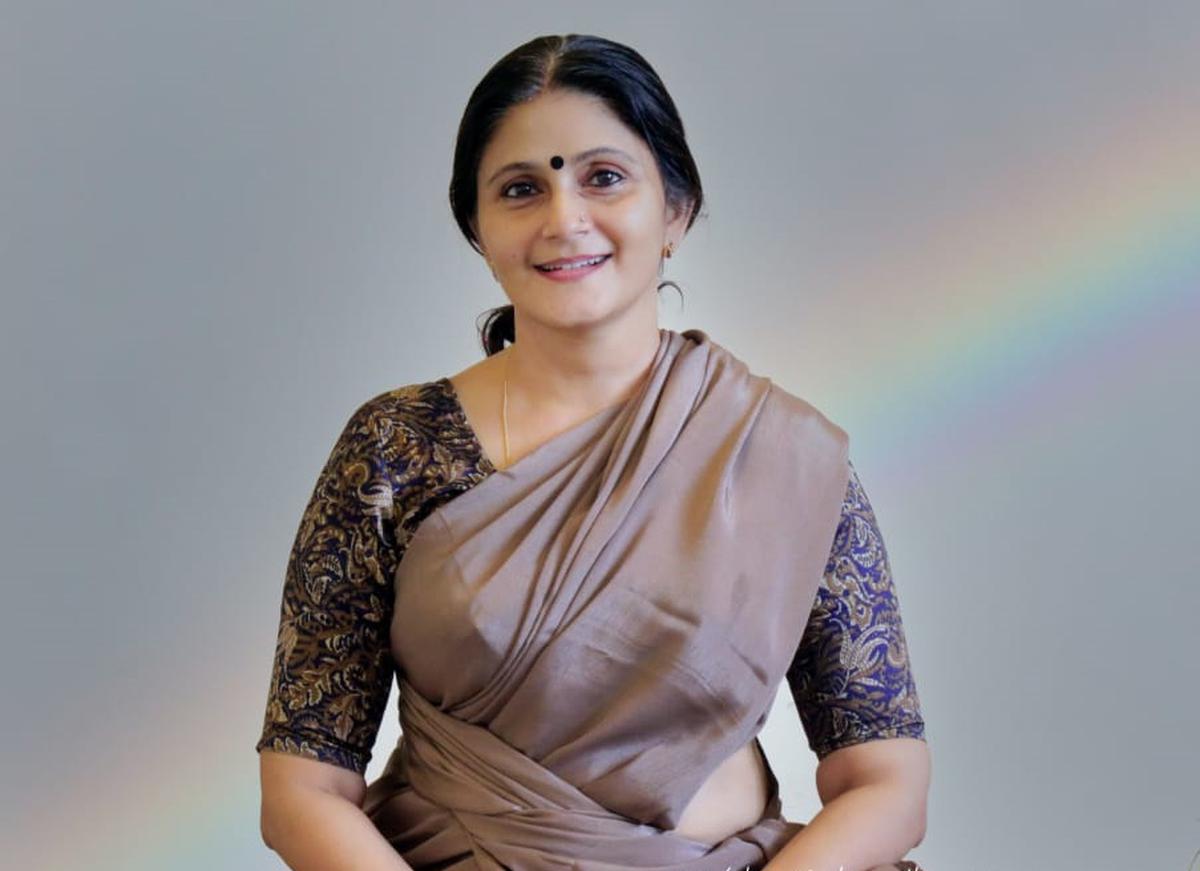Mohiniyattam dancer Gayatri Madhusudan | photo credit: anil aiyur
Raja Ravi Varma’s art and poetry lines have fascinated Mohiniyattam dancer Gayatri Madhusudan ever since she saw Vinod Mankara’s documentary on the artist. when the brush fell, approx six years ago. As much as she was enamored of the poetry in the paintings, she realized that the artist was also a poet who wrote verses in Malayalam, Sanskrit and Manipravalam.
Recently, the Kozhikode-based dancer premiered ‘Hiranmayam’, an hour-long recital based on verses penned by the royal artist. After the premiere at Bharat Bhavan in Thiruvananthapuram, he also performed ‘Hiranmayam’ at an event organized for the inspection of 175. th Raja Ravi Varma’s birth anniversary is celebrated at Kilimanoor Palace, about 35 km from Thiruvananthapuram.
Mohiniyattam dancer Gayatri Madhusudan | photo credit: anil aiyur
Gayatri says that though she does not paint or draw, she was always drawn towards the great artist’s paintings. “The realization that he was also a poet prompted me to read and study the artist’s literary works and the writings on them. It was a quest to understand the artist and the poet,” she says.
Gayatri managed to find some of her verses, in three languages, in various books on the artist. After selecting the verses, he gave them to composer Nilamperur Suresh Kumar, head of the music department at St. Teresa’s College, Ernakulam. He not only composed the music and set the songs for ragas like Nattakurunji and Chenjurutti but also sang the verses in the sopanam style.
“Of the four pieces in my recital, three are based on the artist’s verses. The first one is a Cholakettu which is based on a praise (Devotional verses), ‘Sasishekhara Stuti’. I chose from many such verses written by Ravi Varma and set it to the movement pattern of Mohiniyattam,” she explains.
Second, the main part of his singing is ‘Manasa Yatra’, which is a kind of travelogue. Ravi Varma enjoyed traveling and was used to seeing the places and people there. He also wrote short verses in Sanskrit about the places he visited.
‘Manasa Yatra’ is about the place he could not go. Apparently, he wanted to visit Manasarovar in the Himalayas, but could not go there. Instead, he wrote a poem imagining what it would be like if he went there—the route, the natural landscape, the people, and his experiences. It has four or five verses that I have choreographed,” says Gayatri.

Gayatri Madhusudan | Photo Credit: Special Arrangement
The third is ‘Kirtha Parvati Stavam’, based on a famous painting by the artist, which depicts Shiva and Parvati as forest dwellers. During her research, Gayatri found that the artist had a habit of writing explicit verses as titles for his paintings. She states that much of the details about his habits, professional commitments and travels were taken from a book of journals maintained by C Raja Rava Varma, Ravi Varma’s younger brother and disciple.
“After the painting of ‘Kirath Parvati’, Ravi Varma steps back and asks the painting whether Parvati liked the painting and its depiction. He asks whether the dress pleases Parvati and says that he is happy to know that. How longing to see if she portrayed the scene well. It’s a thought-provoking verse,” says the dancer.
The final item of his text is an elegy written by Subramaniam Bharathi on the death of Ravi Varma. Instead of lamenting the loss of the eminent artist, Bharati writes that after painting celestial beings and beautiful scenes of heaven, the artist himself went to heaven to check whether his paintings had done justice to him. Bharti further says that even heaven will not be able to live up to the attractive pictures made by her. “Two lines of the poem are easily available on the net. I sought the help of a friend in Tamil Nadu to get the complete poem. He found it in a friend’s personal library and sent me a copy. I got it translated and then choreographed FortunateThe piece that is performed at the end of a recital,” she says.